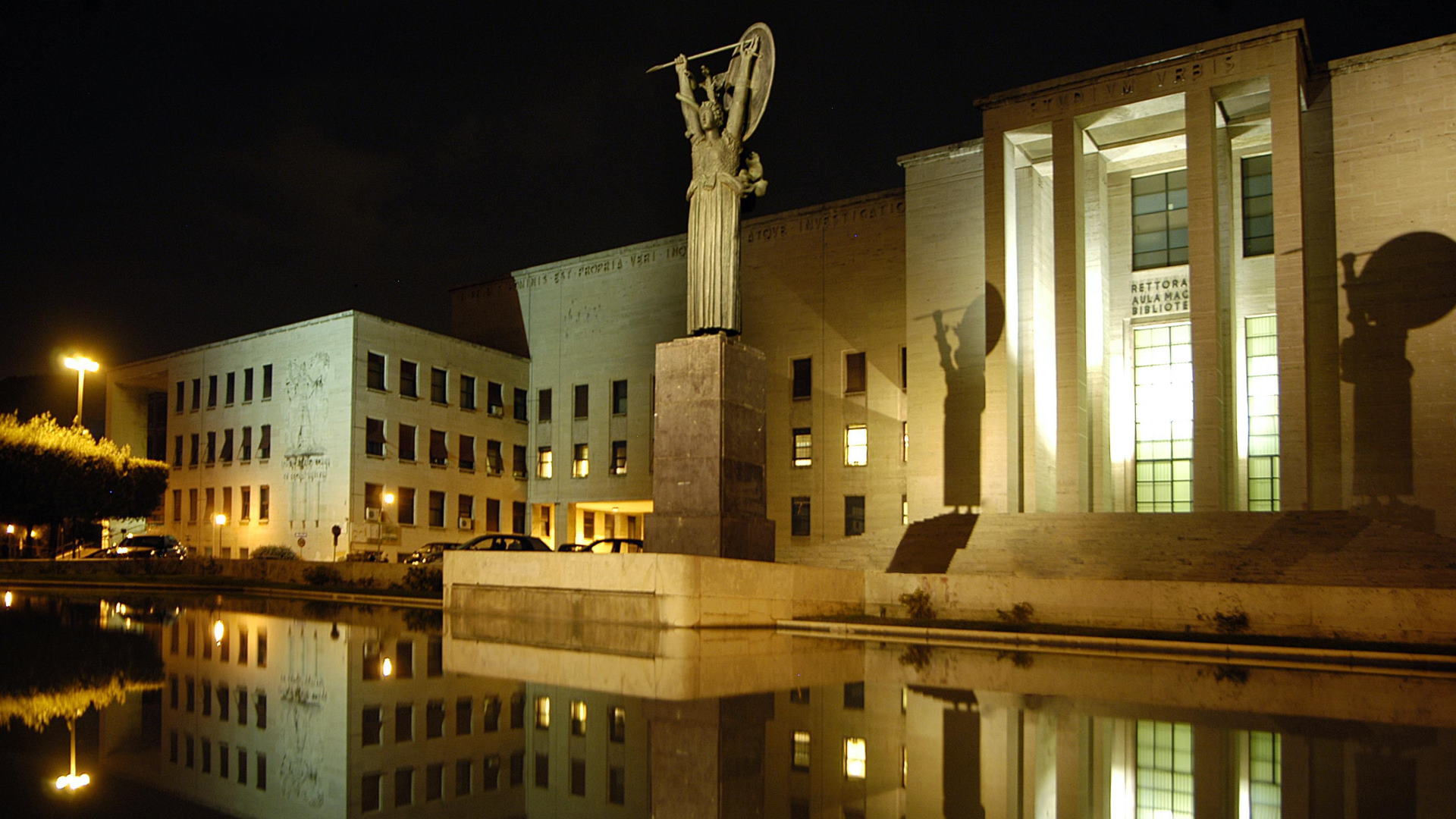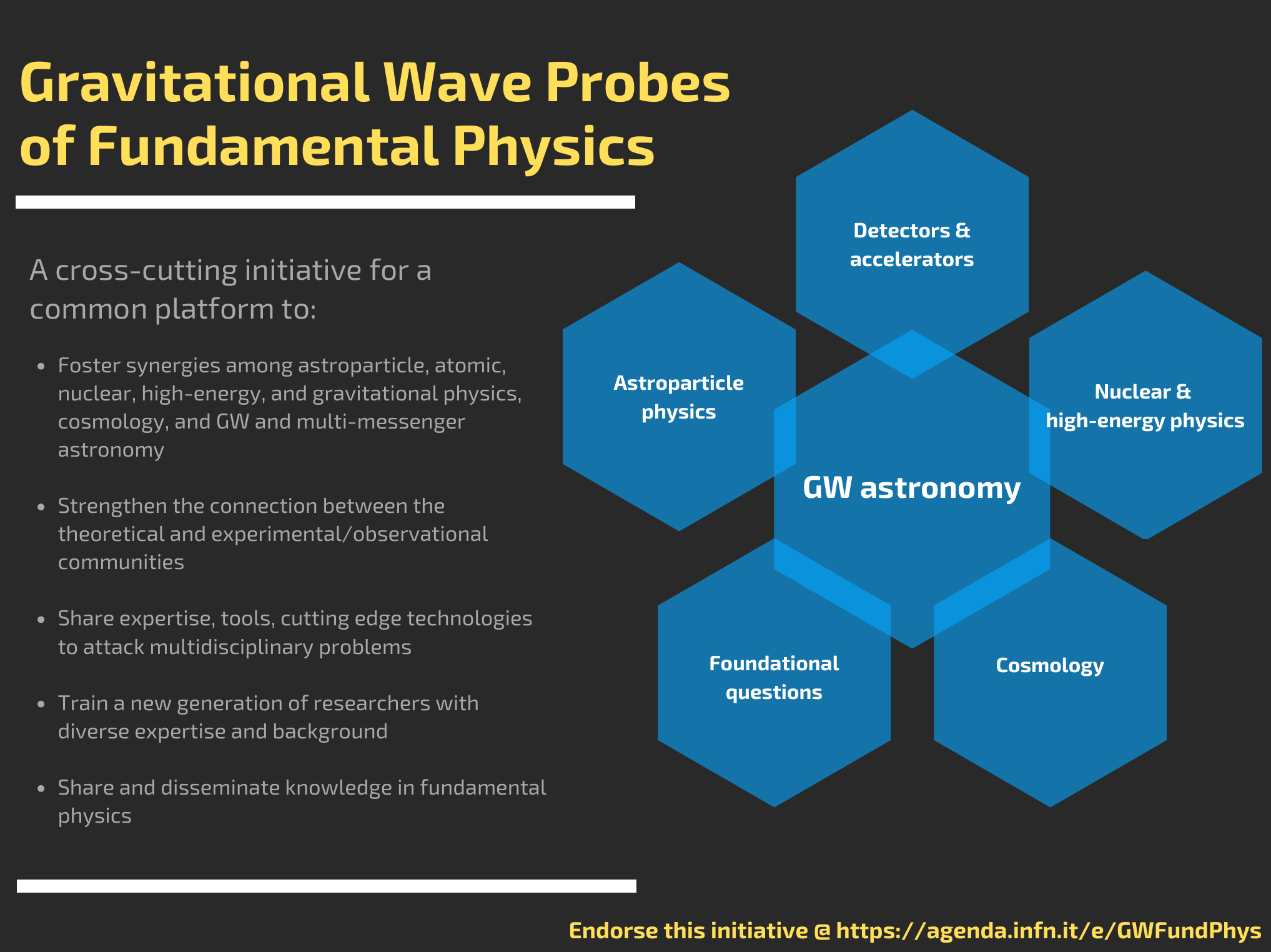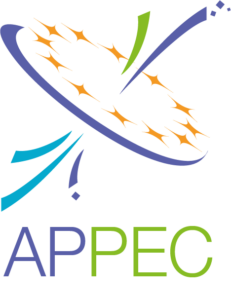Bottom-Up Cross-Cutting Workshop “JENAS Initiative: Gravitational Wave Probes of Fundamental Physics”
Physics Department - Aula Amaldi (Marconi Building)
Sapienza University of Rome
We are excited to announce the first Bottom-Up Cross-Cutting Workshop of the JENAS Initiative “Gravitational Wave Probes of Fundamental Physics”, to be held at Sapienza University of Rome on Feb, 12-16 2024.


This will be the kick-off event that will shape the organization of our cross-cutting initiative, getting all members involved from the very beginning of this effort.
In this spirit, only the main broad topics of the workshop have been fixed, which are those discussed in this manifesto. The entire workshop structure and concrete topics has emerged from the bottom up, based on the feedback from the community
List of burning questions identified by the community.
To remain up-to-date with this and other initiatives, please subscribe to our mailing list: https://lists.infn.it/sympa/info/gwfundphys

Working Groups:
- WG1: Matter under extreme conditions
- WG2: Nuclear and atomic physics and their role in multi-messenger astronomy
- WG3: Fundamental problems in high-energy and gravitational physics
- WG4: GWs & Cosmology
- WG5: Synergies between particle accelerators and GWs
List of invited speakers & Conveneers:
Niayesh Afshordi (CAN)
Michalis Agathos (UK)
Andreas Bauswein (DE)
Diego Blas (ES)
Richard Brito (PT)
Katy Clough (UK)
Pippa Cole (IT)
Maximilian Dax (DE)
Gabriele Franciolini (CH)
Ettore Majorana (IT)
Cristiano Palomba (IT)
Krisztian Peters (DE)
Ira Rothstein (USA)
Alberto Sesana (IT)
Nils Schöneberg (ES)
Jan Steinheimer (DE)
Sarah Vigeland (USA)
Scientific Secretariat: Alessandra Curto
Organizing Committee: Tetyana Galatyuk, Paolo Pani
on behalf of the Steering Committee:
Sven Bernitt, Gianfranco Bertone, Vitor Cardoso, Roberto Emparan, Tetyana Galatyuk, Tanja Hinderer, Aleksi Kurkela, Ann-Cecilie Larsen, Marlene Nahrgang, Samaya Nissanke, Paolo Pani, Rafael Porto, Antonio Riotto, Stephan Rosswog
Support: This event is supported by INFN, JENAS, NuPECC, EMMI and Sapienza.







